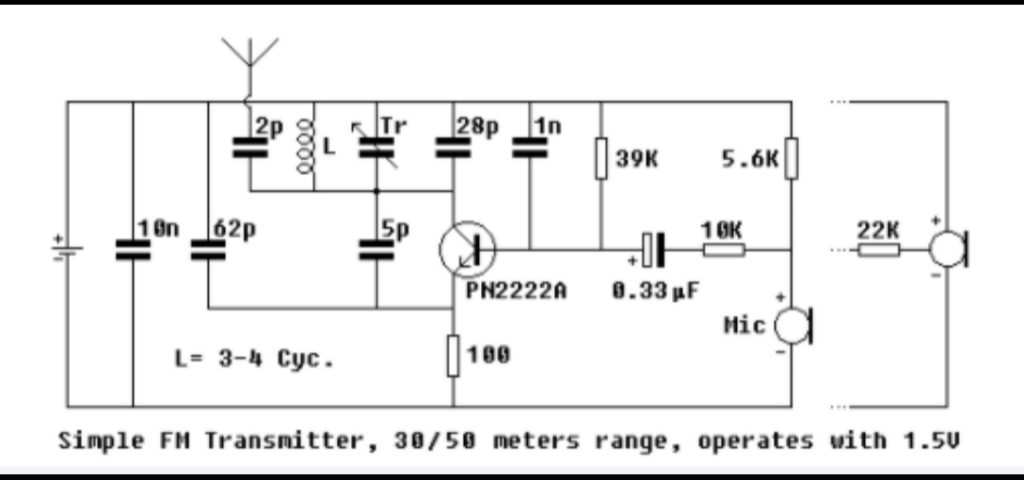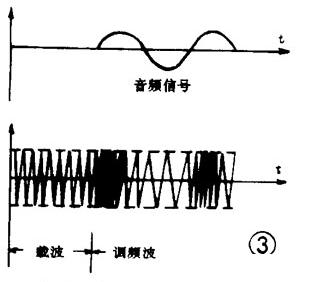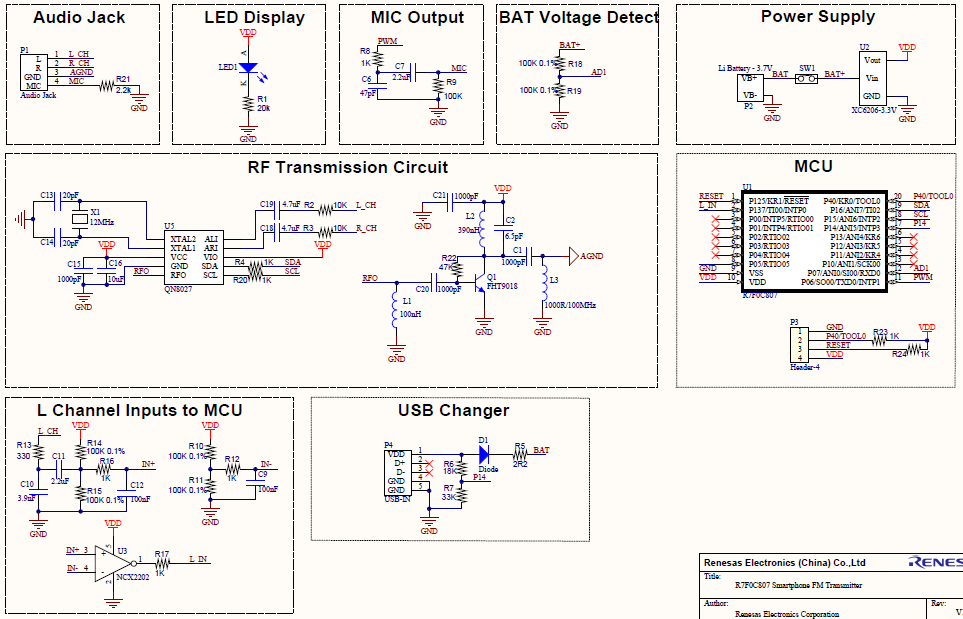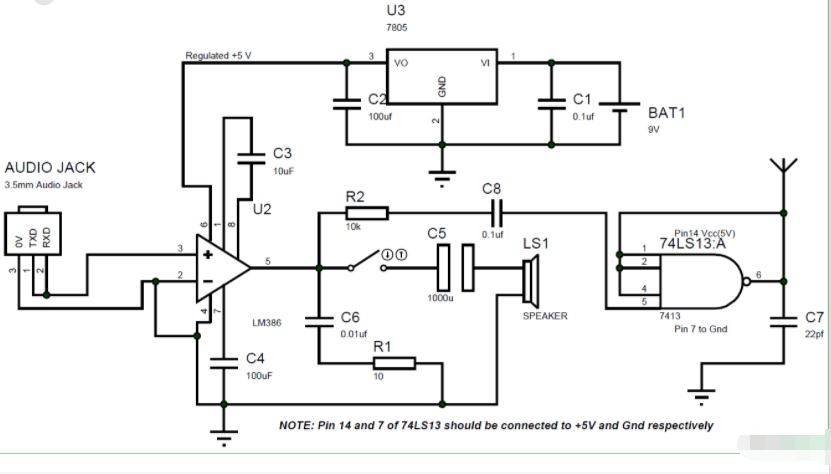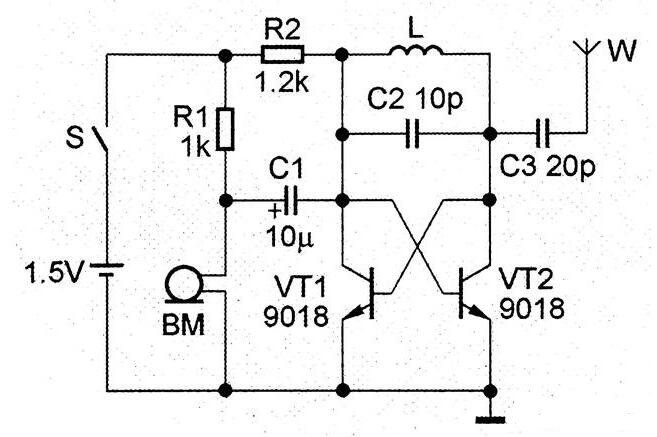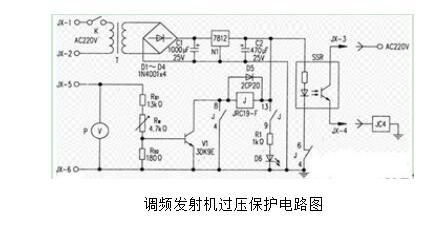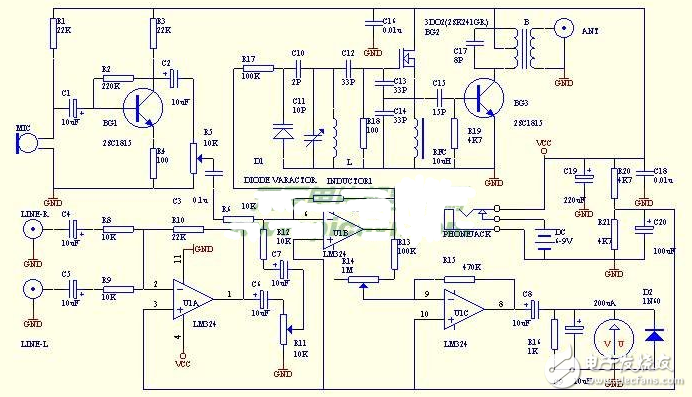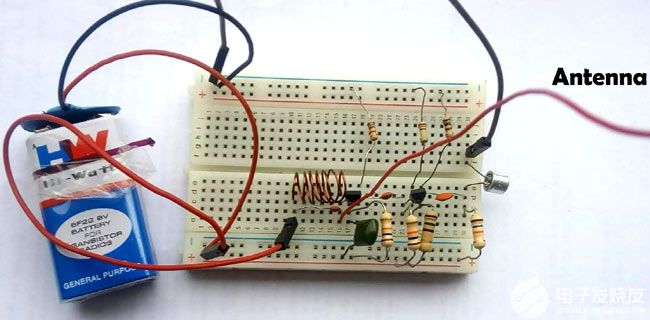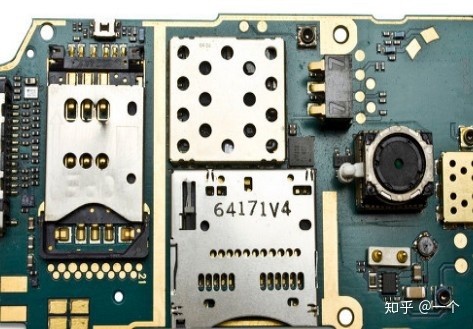1. Sixty years of FM broadcasting
▲ Edwin Armstrong
At the beginning of the last century, there was a fever of invention in the American scientific community. After Edison invented the electric light and the phonograph, Forrest invented the triode, and Bell invented the telephone, Armstrong also joined the ranks of great inventions. He invented negative feedback, regeneration, super-regenerative, and super-heterodyne circuits in one go, laying the foundation for modern radio receivers. In 1933 he invented broadband FM and built a 50-kilowatt private test radio. In April 1935, he transmitted FM and AM signals simultaneously from the Empire State Building in New York, and compared them in his own laboratory in Hattonfield, New Jersey. The results show that the AM signal has been overwhelmed by noise, while the FM signal is still very clear. The United States attaches great importance to FM technology. On New Year’s Day 1941, 25 FM stations opened simultaneously across the United States, creating the world’s first FM radio. In 1958, American engineer Leonard Kang developed a stereo broadcasting system, and in 1960, the Montreal radio station first used Leonard Kang’s system for stereo FM broadcasting. In the mid-1960s, FM stereo developed rapidly. Beginning in the late 1970s, some countries began to study four-channel panoramic surround sound broadcasting, but due to the harsh reception conditions, it was a short-lived failure. my country’s FM broadcasting was piloted in Beijing on New Year’s Day in 1959, and the frequency band was 64.5-73MHz. my country’s FM stereo broadcasting started in Harbin in 1979. In the mid-1980s, FM broadcasting became popular throughout the country. Since then, the Chinese have ushered in a new era of high-fidelity radio broadcasting that is not disturbed by electrical noise. Among the analog broadcasting systems such as AM longwave, medium wave, shortwave, shortwave single sideband and FM, FM is the only medium that can provide high-fidelity broadcasting. The content of broadcasting is mainly music, which is known as happy FM. FM not only brings happiness to our lives, but also is full of charm in broadcasting culture, technical exploration, sound quality evaluation, and equipment collection.
2.The sound quality is comparable to CD
▲Desheng 1994
On September 23, 2007, at the press conference for the establishment of WECWRA held at Tongji University, Mr. Liang from Desheng General Electric Company brought a TECSUN-1994 commemorative desktop radio. When playing the program of Shanghai 94.7MHz Classic Music Station, Shen Ying, a reporter from Shanghai TV station, exclaimed: “How can the sound of this radio sound like a stereo!” This is the charm of FM radio. In fact, the sound quality of the TECSUN-1994 is only entry-level, it can put out a comfortable puffy sound, a soft and sweet midrange, but lack the gorgeous treble. While there are few components above 8000Hz in the vocal spectrum, components above 20kHz are still abundant in the instrumental spectrum. Strings in particular, such as violins and erhus, have higher harmonics that extend all the way to the ultrasonic frequency band. Although the level of these trebles is very low, they just reflect the color of the music and play a role in the icing on the fret. However, in the design of ordinary FM radios, due to the consideration of selectivity, the IF bandwidth is designed to be narrow, and in order to reduce costs, the circuit is programmed, so the sound quality is greatly reduced. The GE-Zenith pilot system is the world’s unified FM broadcast. Compared with the AM system, the frequency offset of 75kHz can improve the signal-to-noise ratio by 17dB; the pre-emphasis of 50 microseconds can improve the signal-to-noise ratio by 10.18dB, and the total can be improved by 27.18dB . If the AM signal-to-noise ratio is calculated at 50 decibels, the signal-to-noise ratio of FM broadcasting can reach 77.18 decibels. FM broadcasting and analog TV broadcasting equipment have never stopped digital transformation, especially on stereo exciters that have undergone matrix coding, time-division switching coding, multiple The quality of the equipment at the transmitting end has been greatly improved. The station’s programming sources range from open-release analog tapes, LPs, and analog cassettes to today’s DATs, CDs, and hard drives. The source distortion is reduced from 3% to 0.001%, and the dynamic range is increased from 50dB to 90dB. Advances in hardware and software on the transmitter side have cleared the way for high-fidelity. In terms of receiver, since the FM frequency is in the VHF band, the high-frequency characteristics of the device and the distribution parameters of the circuit will affect the performance of the whole machine, and the design and manufacturing cost is relatively high. Only conventional technology and cheap devices can not make high-fidelity fax. radio’s. Fortunately, the FM system has huge potential to be tapped. If the cost is spared, the use of adaptive transversal filters, variable parameter processing, digital frequency discrimination, peak sampling phase-locked decoding and other technologies can design receivers with high indicators. Twenty years ago, when I turned on the ST5555 tuner, I couldn’t believe it was a circuit board for a radio. Even in today’s highly developed era of microelectronics, it is still not possible to design a tuner with CD quality. FM technology is really unfathomable, if you compare it with a human house, a high-end tuner is a five-star hotel, and a portable FM semiconductor is a log cabin. All of the above advancements have taken FM broadcasting from the moderate fidelity of thirty years ago to the high fidelity of today. To say that FM radio is comparable to CD, many would disagree. Indeed, after the sound is encoded and modulated at the transmitting end, transmitted over the air, frequency selected at the receiving end, amplified and demodulated, processing errors and mixed noises will inevitably occur. It should be said that the sound quality of a well-designed FM receiver is very close to CD. If you have the chance, listen to a tuner such as the MD-108 or L02-T for yourself, and you’ll get a true taste of today’s FM stereo broadcasts.
3. Broadcast audio sources from tape to CD
Recording technology has changed since Edison invented the world’s first phonograph on August 15, 1877. The sound quality of FM radio has been following in the footsteps of recording technology. The monophonic FM radio sound source, which was born in the 1940s, started from the wire tape recorder and the rough record, and there is no way to verify the quality of the FM radio at that time. By the end of the 1950s, LPs and open-reel tape recorders could basically faithfully record and restore the original appearance of the sound, and the sound quality of FM radio was recognized and valued by people. The low-noise and high-frequency electronic triode specially designed for FM receivers, Sharp cut-off pentodes and high transconductance power tubes began to be mass-produced, laying the foundation for the manufacture of high-quality receivers. In the 1960s, stereo technology was introduced into FM broadcasting. Since the signal-to-noise ratio of weak signals is 21.7 decibels lower than that of mono, the coverage of stereo is only one-third of that of mono, and hissing and hissing noise will be generated in the edge areas of signal coverage, which must be Switching to mono can only be eliminated, so it did not attract people’s praise. The noise floor of the tape recorder, the main broadcasting equipment of the radio station, makes the quality of stereo broadcasting worse. Stereo decoder was used as an optional component in high-end radios. In 1965, Dolby invented Dolby A noise reduction technology, which reduced tape noise by 20 decibels at once, and FM stereo saw the dawn of high-fidelity. In the 1970s, the FM station was equipped with high-resolution stereo exciters, coupled with the application of noise reduction decks and LPs, when live operas and symphonies, people could feel immersive in front of the radio, sound source localization. The advantages of a wide sound field are widely recognized, and stereo is called immersive sound. The appearance of DAT digital recorder and CD in the 1980s revolutionized the recording quality, and FM radio has truly entered the era of high-fidelity. During this period, the broadcasting method of the radio station gradually moved towards automation. The production and broadcasting of the program were carried out separately, and the broadcasting method was mainly based on the recorded program. DAT was once the main equipment of the FM station. After the program was edited, it was recorded on the DAT. Since both DAT and CD record PCM signals, the sound quality can be guaranteed. There are also voice programs recorded on DAT, music programs are selected directly from the CD according to the program, and the automatic manipulator is used to change the disk. This method can ensure the best sound quality, especially when using 24bit/192KHz format SACD discs. In the late 1990s, with the emergence of automatic players, all programs were first produced and edited on the computer, and then transmitted to the hard disk of the broadcasting department using high-speed Ethernet. In order to save space, the sound data was stored in compression. The sound quality of the next broadcast will be discounted a little. Because various audio bit rate compression methods with large compression ratios are lossy, including MUSICAM and AAC used in DAB and FM HD audio broadcasting. In the audiophile world, everyone will scoff at the mention of compressed audio. I wonder how these hardcore audiophiles will feel after listening to digital compressed FM radio?
4. Stereo exciter from hardware to software
The hardware device that affects the quality of FM broadcast at the transmitting end is the stereo exciter, which mainly completes the task of stereo encoding. There are two FM stereo broadcasting systems in the world, the pilot system and the polarization system. my country adopts the pilot system. In the FM broadcast specification formulated by the FCC and western developed countries, the stereo separation index should be greater than 30 decibels, the level difference corresponding to the main and secondary channels is 0.3 decibels, and the phase difference is 3 degrees. Achieving these specifications in analog exciters was quite difficult under past conditions, as long as the phase characteristic of a certain filter was slightly shifted around 15 kHz, once a 1.5 dB level difference or 20 degrees of phase was produced. Poor, the stereo sound will disappear. Therefore, the quality of the exciter determines the sound quality of the broadcast. The early tube exciters were of the matrix format, and the level and phase balance between the sum and difference signals had a great impact on the performance of the whole machine, and the technical indicators barely met the broadcast-level requirements. Later transistor drivers have been improved to switch mode. In the switching system, the difference signal channel is implied, and the factor affecting the separation is transferred to the phase of the sub-carrier and pilot. If the sub-carrier frequency is used as the sampling signal, the stereo separation can reach 35 dB, which has exceeded the FCC specification. . Human beings have the nature of pursuing perfection, and then use the third harmonic of the sub-carrier frequency as auxiliary sampling, superimposing it into the MPX can cancel the third harmonic of the sub-carrier in the composite signal, and the separation degree is increased to 40 decibels. The soft-switching technology invented by McMartin in 1980 greatly improved the performance of the exciter. In the 14-level soft-switching encoder, the harmonic components below the 13th order in the composite signal are zero, and the separation is increased to 60 decibels. Various manufacturers later competed to increase the soft-switching frequency, and the 38-level soft-switching, 3.444MHz sampling frequency exciter separation degree reached 70 decibels. At the beginning of this century, the processing speed of DSP has been able to cope with complex coding algorithms. A 2048-level soft-switching, 77.824MHz sampling frequency DSP encoder suddenly improves the resolution to more than 90 decibels. Modern DSP stereo drivers are full-scale, including analog pilot and polarization, digital DAB and HD Audio, and direct digital frequency synthesis (DDS). In 1986, two engineers from CBS and the National Association of Broadcasters (NAB) invented FMX, which added a quadrature difference signal and used companding coding to cover the stereo coverage of the FM station. It has been expanded by 3 times, reaching the same transmission distance as mono, and greatly improving the stereo separation. Another advantage of this system is that it is compatible with the common FM system. Common FM receivers can receive FMX signals, but they cannot demodulate quadrature difference signals. FMX receivers can reliably receive stereo broadcasts in areas on the edge of radio coverage without switching to mono. FMX is attractive to both radio stations and listeners. The FCC in the United States does not enforce the FMX system, and local radio stations choose to implement it. Just as there is no AM stereo in our country, there is no FMX radio station in our country either.
5. Tuner – the emperor of FM receivers
▲Desheng TU-80 broadcast tuner Photographer: Huang Xueming The exact meaning of Tuner is a radio tuner, which is called a radio head by the Chinese. It is a high-end product in broadcast receivers. Generally, it only includes two bands, FM/AM. The most attractive is of course the FM band. The manufacturer also uses the whole body solution to make the FM band best. The 1960s and 1980s were the most prosperous period of FM broadcasting. During this period, there was no Internet and no digital audio sources. A typical home music center was equipped with a tuner, a moving iron record player and a Dolby noise reduction deck. In the early 1960s, FM broadcasting was in the transition stage from mono to stereo, and the tuner was born during this period. The circuit was composed of discrete components of tubes or transistors, and the sound quality was worse than that of vinyl and tape. By the 1970s, all FM broadcasts had achieved stereo, excellent stereo exciters had greatly improved the quality of broadcasts, tuner design technology had also made great progress, and excellent integrated circuits and solid-state filters (crystal sound meters and ceramics) were widely used. , so that the sound quality of FM stereo exceeds that of DolbyB cassettes and is close to vinyl records. The 1980s was the golden age of FM radio, and radio stations generally used DAT and CD as sound sources. Microprocessors introduce tuners, and circuit design pursues innovation. Excellent tuners came out one after another, with 0.003% distortion in mono and 0.01% in stereo. The sound quality exceeds that of a moving iron record player and is smoother than that of a Dolby C deck. Dolby C doesn’t sound as polished as FM due to the wheezing effect. During this period, the admiration of advanced tuners by radio enthusiasts in Japan and Europe reached a frenzy. Everyone was eagerly waiting for the announcement of the new model. After the new model was launched, they rushed to buy it, and then compared the performance and commented on it. Also happy. During the same period, magazines such as “Radio Wave Science” and “Wireless and Experiments” published many articles introducing new technologies of tuners, which attracted enthusiasts like magnets attracting iron. Don’t be a breaker. With the popularization of digital audio sources in the 1990s, CDs replaced almost all audio sources, vinyl and decks soon withdrew from the stage of history, and FM tuners began to fall out of favor. With the start of digital broadcasting, the original FM/AM tuner has evolved into the current DAB/FM tuner and HD Audio/FM tuner, and FM has become a subsidiary status in the tuner. The glorious history of FM broadcasting in the last century has left a rich legacy for tuner collectors. Sixty-five electronics companies around the world produced more than 2,000 models of tuners, of which 18 are the most famous. See Table 1 for the device. Chinese radio enthusiasts did not have access to these noble devices in the past, but today they can occasionally be found in e-waste markets in Beijing, Shanghai and Guangzhou.
6. Solve the intermodulation and false response from the high frequency head
In the FM tuner, there is a high-frequency circuit shielded with iron sheet called the tuner, which contains high-amplification, frequency mixing, oscillation and tuning circuits. The tuner is at the forefront of signal processing, and its quality directly determines the receiver’s sensitivity, intermodulation spurious response and other indicators. In the 1960s, because there were not many FM stations in an area, the design of the tuner was very simple, and the double tuning could be well received. In the 70 years, the FM stations in the big cities were dense. In order to improve the selectivity, the tuner was designed to be multi-tuned, and the maximum number was as high as 13. After the multi-connection structure is adopted, the selectivity is indeed improved, but the tracking error is also increased, the group delay characteristic is deteriorated, and the sound quality is deteriorated. At that time, because there was no high-quality sound source, people did not notice the change in sound quality. In the 1980s, when tuners entered the ranks of high-fidelity equipment, sound quality became the most important indicator. People realized that to improve sound quality, the false response caused by intermodulation must be eliminated first. The number of false responses is related to the number of radio stations. If the number of radio stations is n, the number of false responses is (n-1)n. At present, large cities along the coast and east of my country can generally receive more than 30 FM stations, so the number of false responses is as high as 870, which shows how serious the problem is. Therefore, when a city sets the frequency of an FM radio station, it will carefully calculate the number of false responses that fall into the receiving frequency band to a minimum. The false response ostensibly causes an increase in the number of stations that can be received, but when tuned to the false response frequency is accompanied by hiss, hiss, hiss and chirp, chirp, and chirp. Since the frequency mixing is realized by the nonlinear characteristics of the device, and the nonlinearity is the source of intermodulation, in principle, the false response of the superheterodyne receiver cannot be completely eliminated, so the device with excellent linearity and large dynamic range It has become a powerful tool to improve the performance of the tuner. From the perspective of intermodulation and cross-modulation indicators, bipolar transistors are the worst, junction field effect transistors are slightly better, MOS field effect transistors are better, and potassium arsenide field effect transistors are the best. Because potassium arsenide single crystal is very easy to break, it is difficult to manufacture and expensive. The depletion-mode double-gate silicon MOS transistor is equivalent to a cascode series amplifier. It has a large dynamic range, small Miller capacitance, good stability, and its linearity is better than that of a six-tube balanced analog multiplier. ideal device. How much is the tuner connected to? From the viewpoint of selectivity alone, the more the number of connections, the better; but from the perspective of linearizing the group delay characteristics and improving the sound quality, the fewer the number of connections, the better. In order to take into account the sound quality and selectivity, it is better to choose 4 to 5 connections. The next question is air variable capacitors or varactors for tuning devices? The tuners before the mid-1970s all used air variable capacitors. Since the first frequency synthesis tuner ST-910 came out in 1974, various manufacturers have imitated them one after another. Japan is the country that produces the largest number of tuners in the world. In 1983, Alps discontinued the last air multi-connector, which marked the end of the variable capacitor tuner. In terms of insertion loss and capacitance-frequency characteristics, air variable capacitors are significantly better than varactors. In order to improve the Q value of the varactor diode, the two varactors can be made into a back-to-back twin tube form, and the performance is close to that of the air variable capacitor. The biggest advantage is that it can realize digital tuning and multi-point control, and get rid of the trouble of manual tuning.

